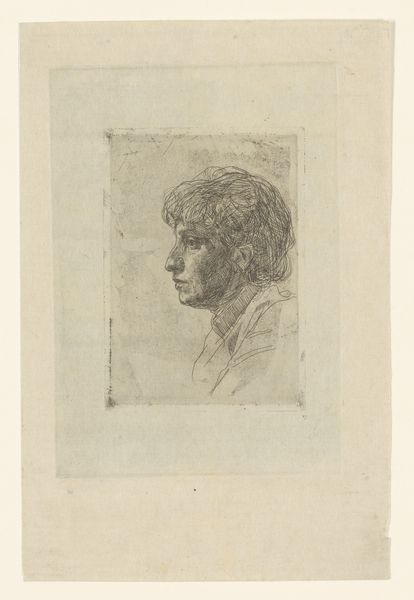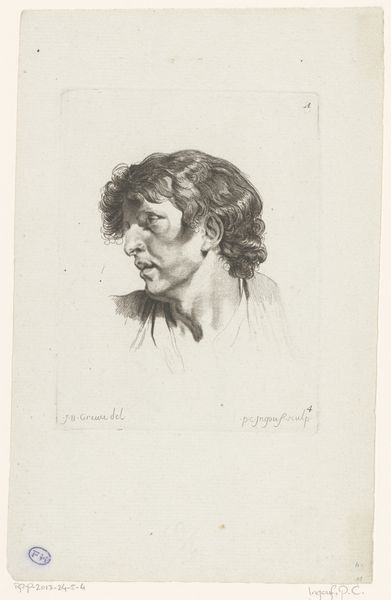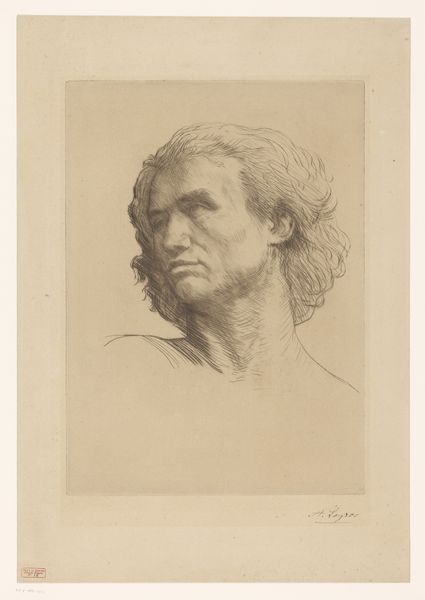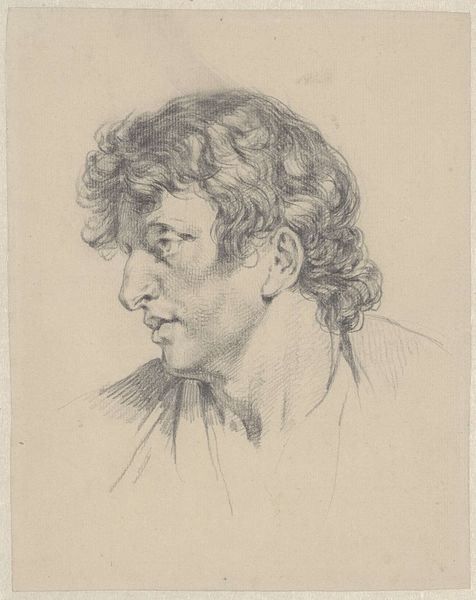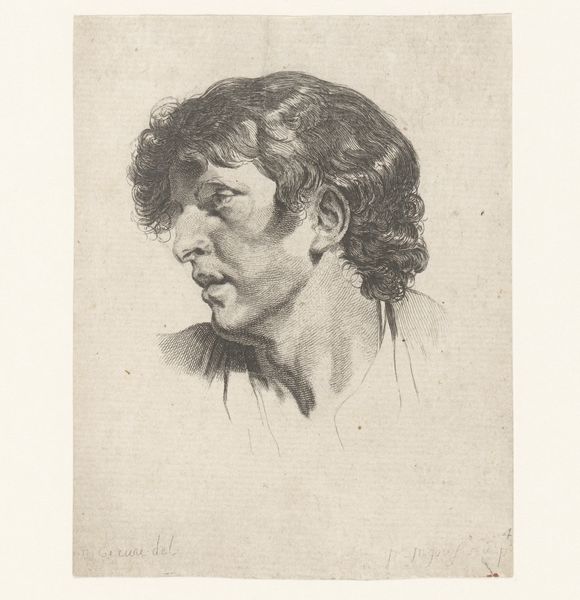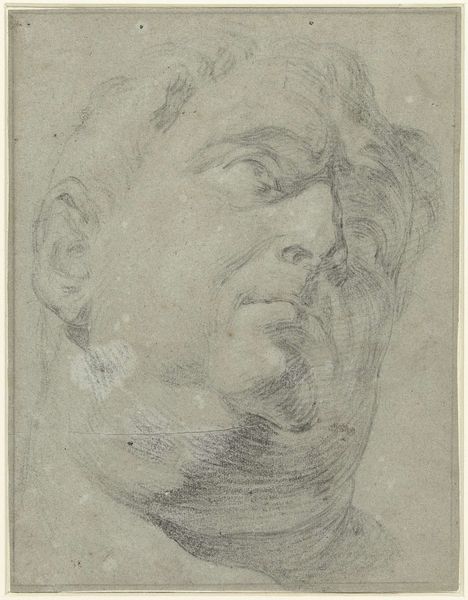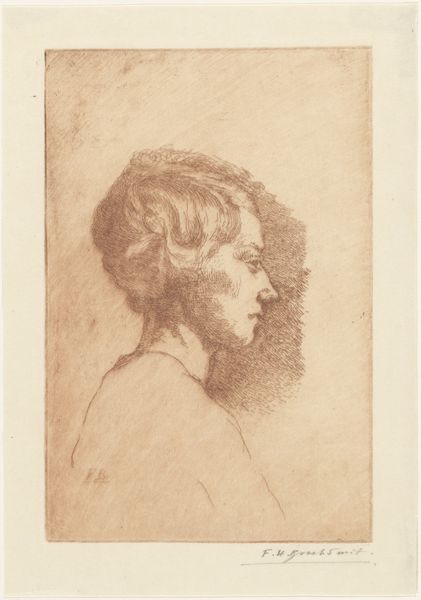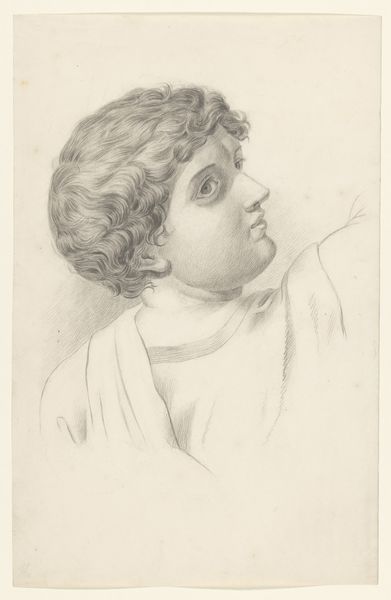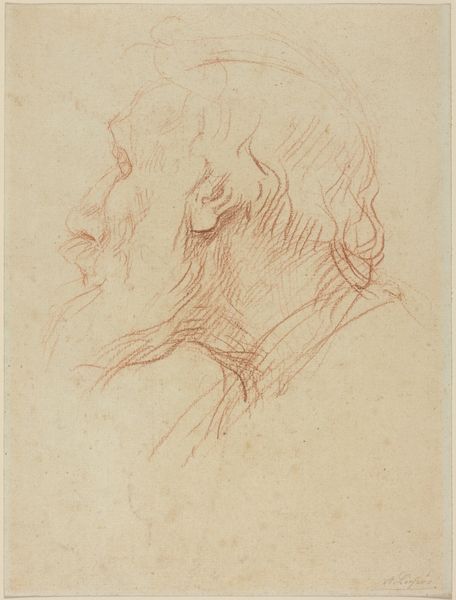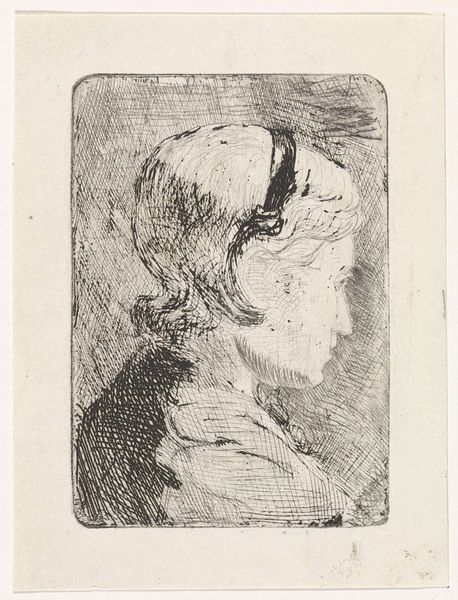
drawing, print, etching, graphite
#
portrait
#
drawing
# print
#
etching
#
graphite
#
portrait drawing
Dimensions: plate: 12.3 x 9.8 cm (4 13/16 x 3 7/8 in.) sheet: 25.5 x 19.8 cm (10 1/16 x 7 13/16 in.)
Copyright: National Gallery of Art: CC0 1.0
Editor: So, this is Hermann Struck's graphite etching of Marc Chagall, from around 1922. It feels very intimate, like a glimpse into a quiet moment. What strikes you when you look at it? Curator: The profile, sharply rendered against the soft background, immediately recalls the tradition of classical portraiture. Think of Roman emperors on coins, or Renaissance medallions. There's a deliberate echo here, but consider who Chagall was. Editor: An artist known for his dreamlike scenes. Curator: Exactly. Chagall’s imagery often incorporates Jewish folklore and memories of his Russian-Jewish upbringing. Struck, also a Jewish artist, creates a portrait which carries the weight of cultural memory, perhaps presenting Chagall as a modern cultural icon in the making. Note how the etching captures a sense of both strength and vulnerability in his face, no? Editor: Yes, the etching seems to emphasise the planes of his face and the somewhat vulnerable curve of his neck. Do you see a psychological element here too, beyond just cultural memory? Curator: Definitely. Struck has captured not just Chagall’s physical likeness, but perhaps also an internal world. Look at the heavy lidded eyes, perhaps indicating melancholy, creativity, reflection... Symbols rarely exist in isolation, and the portrayal, the act of fixing another artist's likeness in ink is itself a symbol of artistic dialogue and influence. Editor: So much is revealed in just a profile. It’s incredible. Curator: Precisely, isn't it, how seemingly simple images act as a bridge to complex emotional and cultural landscapes. We have merely scratched the surface here.
Comments
No comments
Be the first to comment and join the conversation on the ultimate creative platform.
